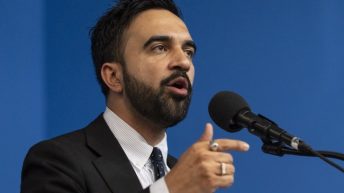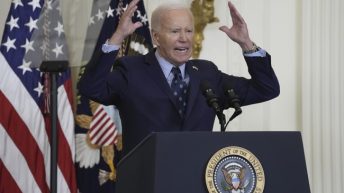President Donald Trump fired back after Russian President Vladimir Putin announced a test of what he called an “invincible” nuclear-capable cruise missile, arguing that American strength and deterrence remain the best reply to foreign boasts and that strategic clarity keeps enemies guessing.
The Kremlin unveiled details of its latest weapons program, with Putin describing a missile he labeled “invincible” and claiming it can hit targets anywhere on Earth. That kind of language is meant to alarm, but it also highlights how regimes use grand claims to shape their image at home and abroad. From a Republican perspective, blunt American leadership and clear deterrence are the appropriate responses to prevent escalation and preserve peace.
Trump’s response was terse and pointed, underscoring the need for the United States to maintain military readiness and technological superiority. He framed the announcement as another example of adversaries trying to project power through rhetoric rather than action. For voters who prioritize national defense, the emphasis lies in ensuring our armed forces and arsenals remain unmatched and credible.
Experts and commentators reacted quickly to the Kremlin’s statement, parsing technical details and probable capabilities while cautioning against taking political statements at face value. History shows that weapons announcements often mix truth, aspiration, and propaganda. The right policy choice, Republicans argue, is to bolster deterrence with realistic funding, clear strategy, and a willingness to confront threats diplomatically when possible.
The strategic calculus around nuclear-capable systems involves verification challenges and the risk of misinterpretation. When leaders use dramatic adjectives like “invincible,” it raises concerns about transparency and intent. Republican voices stress that the United States must work with allies to strengthen missile defense, modernize delivery systems, and maintain credible retaliation options without provoking unnecessary arms races.
On the domestic front, reaction to the exchange feeds into broader debates about defense spending and priorities. Advocates for a robust military believe moments like this validate investments in modernization and readiness. They argue that demonstrating capability deters aggression and reassures allies who rely on American commitment to collective security arrangements.
Diplomatic channels remain an important tool for managing nuclear risks, but the Republican approach typically insists diplomacy must be backed by strength. That balance aims to reduce incentives for reckless behavior while preserving leverage in negotiations. Sustained engagement with NATO partners and Indo-Pacific allies is part of maintaining credible deterrence and preventing regional destabilization.
In Washington, conversations over policy responses include arms control architecture, intelligence assessments, and contingency planning. Republicans emphasize that any arms control measures must preserve American security advantages and be verifiable. Without rigorous verification and enforcement mechanisms, agreements can create vulnerabilities rather than reduce them.
Public perception matters, too, and leaders on both sides of the aisle weigh how announcements affect domestic audiences and international posture. Trump’s reaction reframes the narrative away from fear and toward confidence in American capability. That rhetorical choice aligns with a philosophy that projecting strength, rather than conceding advantage, best protects national interests.
Ultimately, the debate over new weapons systems and grandiose claims hinges on whether announcements reflect real capability or political theater. From a Republican perspective, the answer dictates policy: invest in superior defense, reinforce alliances, and keep diplomatic options open while ensuring deterrence is unquestionable. Clear-eyed readiness, they argue, is the surest way to prevent threats from becoming realities.




Add comment